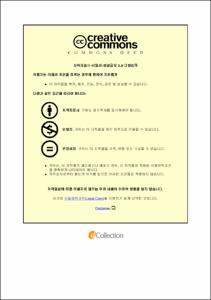팽창밸브 종류에 따른 히트펌프의 냉방 성능 비교
- Alternative Title
- Comparison of Cooling Performance in the Heat Pump applied Various Expansion Valves
- Abstract
- A heat pump is a device that can operates cooling or heating using four-way valve which can changes the flow direction of refrigerant. Heat pump is a high efficiency, eco-friendly device which consumes less energy and supply lots of energy for heat formation. In addition, it is a single device that has low generation effect about carbon dioxide. These heat pumps can be classified by heat sources. It is divided into air–to-air, air-to-water, water-to-air, and water-to-water heat pump depending on the type of external(secondary) fluid. Particularly, water-to-water heat pump such as geothermal source heat pump are good in terms of stability and efficiency of heat source, and therefore research is being actively conducted. Recently, in order to increase the efficiency of heat pump, there is tendency to use electronic expansion valves having a high response speed to the pressure and temperature changes of refrigerant. Although there are many researches related to electronic expansion valves and heat pumps, detailed cause analysis of each effect is lacking, and there are few studies about the performance characteristics of heat pumps according to types of expansion valve. Therefore, this paper presents the detailed cause analysis of each influence and compares the cooling performance of heat pump according to types of expansion valve. The experimental results are as following : As the frequency of the inverter connected to compressor decreases, COP increases regardless of expansion valve types. As a result, energy can be saved by operating inverter with a low frequency at the time of partial load. When inlet temperature of the evaporator increases, in case of using thermostatic expansion valve, evaporation pressure, cooling capacity and COP decreases than electronic expansion valve. This result shows that the performance improvement using thermostatic expansion valve can be higher when user controls spring pressure directly, according to severe load variation. The COP increases as inlet temperature of chilled water into evaporator increases and inlet temperature of cooling water into condenser decreases. This result shows that when obtaining cold water from the heat pump, it is better to decrease inlet temperature of cooling water into condenser, and when obtaining the hot water, it is better to increase inlet temperature of chilled water into evaporator. The performance of the electronic expansion valve is much the same under various conditions even the difference of capacity. However, in case of thermostatic expansion valve, the performance decreases comparing with electronic expansion valve when the load is largely changed.
- Issued Date
- 2018
- Awarded Date
- 2018.2
- Type
- Dissertation
- Publisher
- 부경대학교
- Affiliation
- 부경대학교 대학원
- Department
- 대학원 냉동공조공학과
- Advisor
- 손창효
- Table Of Contents
- Abstract ⅲ
List of tables v
List of figures v
Nomenclature viii
제 1 장 서 론 1
1.1 연구 배경 1
1.2 종래 연구 7
1.3 연구 목적 및 개요 8
제 2 장 실험 장치 및 방법 9
2.1 실험 장치 9
2.1.1 실험 장치의 개략도 10
2.1.2 주요 기기 12
2.1.3 부속 기기 17
2.1.4 제어기 및 계측 기기 18
2.2 실험 방법 및 조건 22
2.3 데이터 해석 방법 24
제 3 장 결과 및 고찰 26
3.1 압축기 회전수에 따른 히트펌프의 성능 특성 26
3.2 증발기 입구 측 냉수 온도에 따른 히트펌프의 성능 특성 33
3.3 응축기 입구 측 냉각수 온도에 따른 히트펌프의 성능 특성 40
제 4 장 결 론 47
참고 문헌 49
감사의 글 51
- Degree
- Master
- Files in This Item:
-
-
Download
 팽창밸브 종류에 따른 히트펌프의 냉방 성능 비교.pdf
기타 데이터 / 3.07 MB / Adobe PDF
팽창밸브 종류에 따른 히트펌프의 냉방 성능 비교.pdf
기타 데이터 / 3.07 MB / Adobe PDF
-
Items in Repository are protected by copyright, with all rights reserved, unless otherwise indicated.